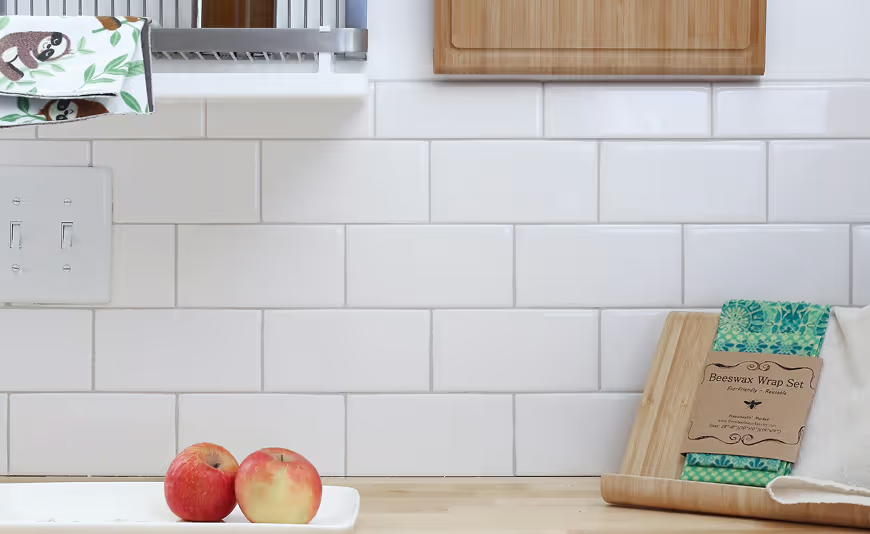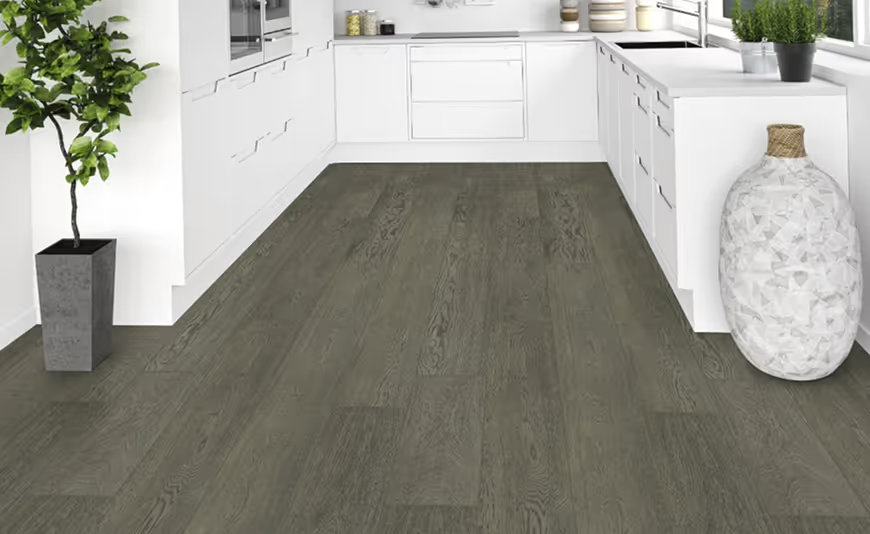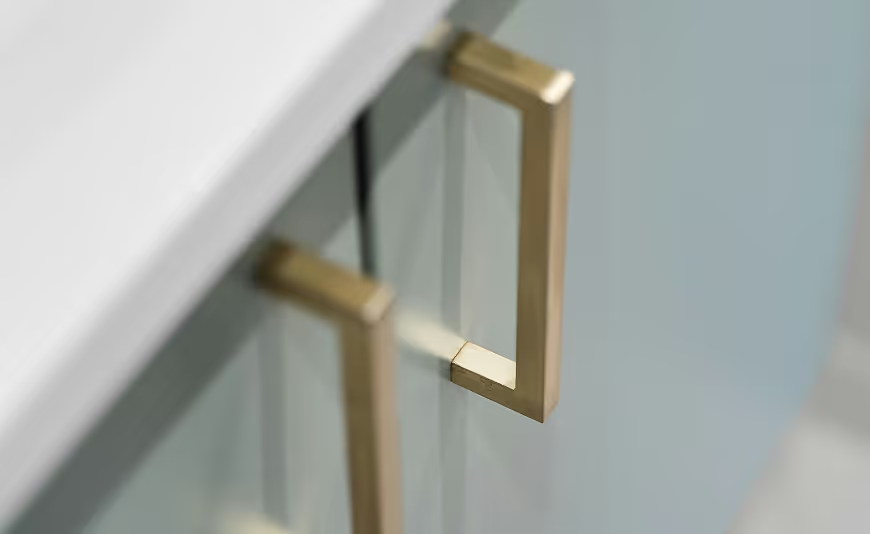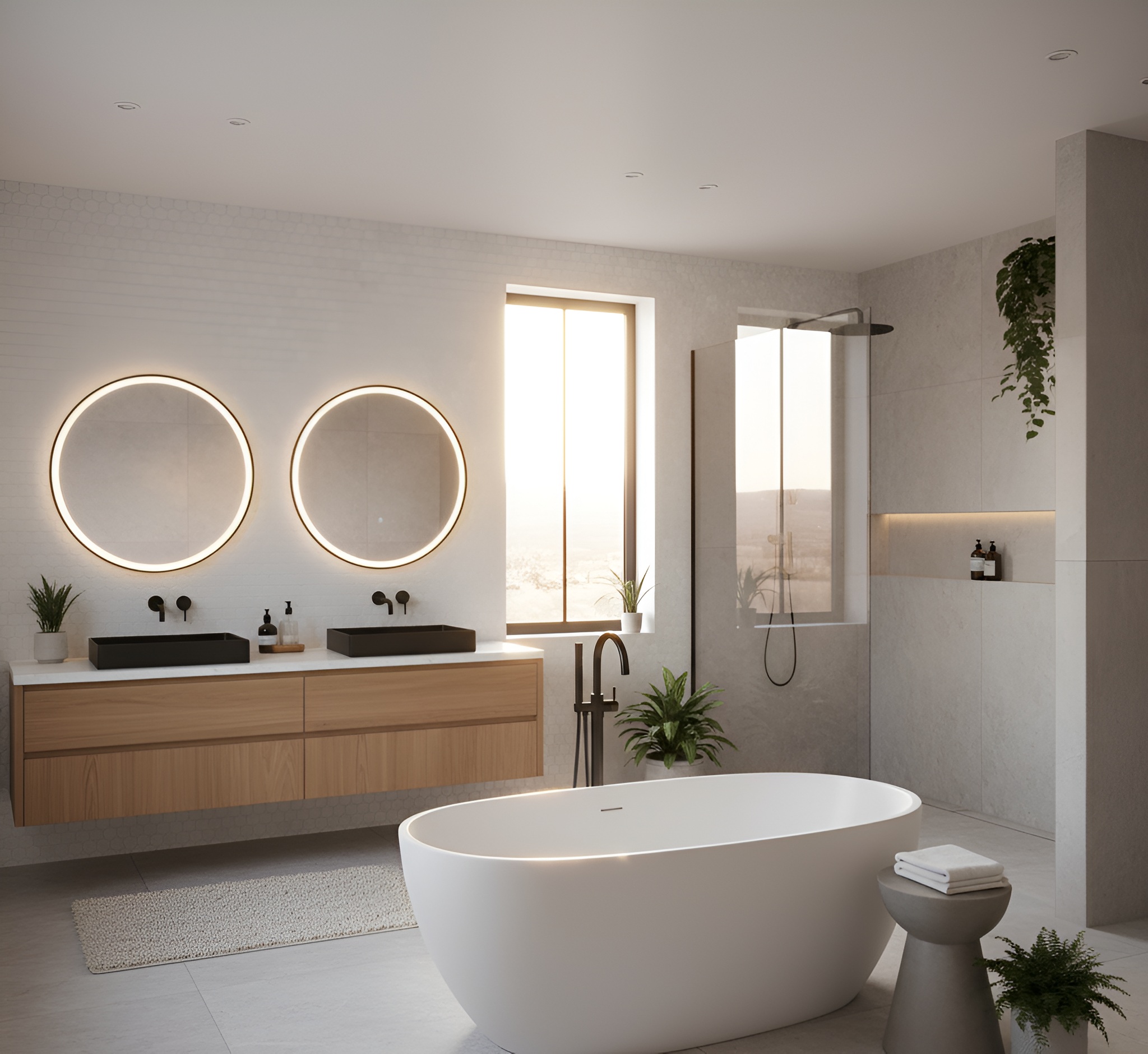If you're living in Northern Virginia, you know the struggle is real when it comes to kitchen space. Whether you're in a charming Arlington bungalow, a cozy Alexandria townhome, or one of those classic Fairfax colonials where the kitchen wasn't exactly designed for modern life, small kitchens are just part of the DMV housing landscape. But here's the good news: you don't need a five-figure renovation or to knock down walls to make your kitchen feel dramatically more spacious. With some clever tricks and strategic choices, you can transform your cramped cooking space into one that feels open, airy, and actually enjoyable to work in.
1. Embrace Light Colors (Yes, Even White!)
This might seem obvious, but there's a reason designers keep coming back to light color palettes. White, cream, pale gray, and soft neutrals literally reflect more light, making your kitchen feel larger and brighter. And let's be honest—during those gray Northern Virginia winters when the sun sets at 4:30 PM, you need all the brightness you can get.
Consider painting your cabinets white or a light neutral if they're currently dark wood or a bold color. If painting cabinets feels too ambitious, start with the walls. Even switching from beige to a crisp white can make a surprising difference. And don't worry about white being too sterile—you can warm it up with wooden cutting boards, brass hardware, or colorful dish towels.
2. Install Open Shelving (Strategically)
Open shelving has become incredibly popular, and for good reason. Removing cabinet doors instantly creates visual breathing room. Upper cabinets can feel heavy and oppressive, especially in a small kitchen, but open shelves feel light and airy.
You don't have to go all-in, either. Try removing the doors from just one or two upper cabinets to start. Display your prettiest dishes, bowls, and glassware. This works especially well in kitchens with limited natural light—solid cabinet doors block whatever light you do have, while shelves let it flow through.
Just be realistic about your lifestyle. If you're not someone who wants to keep dishes looking perfect all the time, or if you're dealing with Northern Virginia's dust and pollen (we see you, spring allergy season), maybe stick to one or two sections of open shelving rather than going wall-to-wall.
3. Maximize Vertical Space
When you can't go out, go up! Most kitchens have wasted space between the top of the cabinets and the ceiling. If your cabinets don't reach the ceiling, consider adding a row of smaller cabinets or extending them upward. Yes, you'll need a step stool to reach the top shelves, but that's perfect for storing items you rarely use—holiday platters, that fondue set you got as a wedding gift, seasonal items.
You can also install hooks or a rail system on empty wall space to hang pots, pans, utensils, and even coffee mugs. Magnetic knife strips keep counters clear while putting your knives on display. Think vertical whenever possible—it's real estate you're probably not using.
4. Choose Reflective Surfaces
Mirrors aren't just for bathrooms and entryways. Reflective surfaces bounce light around and create the illusion of more space. A glossy tile backsplash works beautifully for this purpose—consider classic white subway tiles with a high-gloss finish, or even mirrored tiles if you're feeling adventurous.
Glass cabinet doors on upper cabinets also create depth and reflection. You can even add a mirror to a kitchen wall if it makes sense with your layout—maybe on the side of a cabinet or in a breakfast nook area. Stainless steel appliances and polished chrome fixtures all contribute to this reflective, space-expanding effect.
5. Streamline Your Countertops
This is the fastest, cheapest way to make your kitchen feel bigger, and it costs exactly zero dollars: clear your counters. I know, I know—you use that coffee maker every single day, and the toaster, and the Instant Pot, and that cute utensil holder. But visual clutter makes a space feel cramped and chaotic.
Be ruthless. Keep only what you truly use daily on the counters—maybe the coffee maker and one small cutting board. Everything else should find a home in a cabinet, drawer, or pantry. You'll be amazed at how much more spacious and calmer your kitchen feels when you can actually see the countertop. Plus, meal prep becomes easier when you have actual workspace.
6. Upgrade Your Lighting
Northern Virginia homes, especially older ones, often have inadequate kitchen lighting—maybe one sad overhead fixture trying to do all the work. Good lighting doesn't just help you see what you're chopping; it makes the entire space feel larger and more inviting.
Layer your lighting with under-cabinet LED strips (these are surprisingly affordable and easy to install), pendant lights over an island or eating area, and make sure your overhead lighting is bright enough. Replace that builder-grade fixture with something that provides more light. Consider adding dimmer switches so you can adjust the ambiance. When a kitchen is well-lit, it automatically feels more spacious and less cave-like.
7. Choose Slimmer, Multi-Functional Furniture
If your kitchen has room for a table or island, choose pieces that work harder. A narrow console table can serve as extra prep space and storage. A rolling kitchen cart can be moved around as needed or tucked away. Bar stools that tuck completely under the counter disappear when not in use.
Avoid bulky furniture that blocks sightlines. In a small kitchen, every piece should earn its place. That oversized farmhouse table might be gorgeous, but if it makes your kitchen feel like an obstacle course, it's not worth it. Look for slim profiles and pieces with built-in storage.
8. Create Visual Continuity
Using the same flooring throughout your kitchen and adjacent spaces makes everything feel more expansive. If you're renovating, consider continuing the same flooring into the dining room or hallway. Even if you can't change the floors, you can create continuity through color—keeping the same color palette flowing from room to room eliminates visual breaks that make spaces feel choppy and small.
The same goes for your backsplash. Taking it all the way to the ceiling creates one uninterrupted vertical line that draws the eye upward and makes the room feel taller. It's more expensive than stopping at the standard 18 inches, but the visual payoff is significant.
9. Embrace Transparency
Glass, acrylic, and other transparent materials take up physical space without blocking visual space. A glass dining table instead of a solid wood one, acrylic bar stools instead of heavy wooden ones, even glass food storage containers instead of opaque ones—all of these choices reduce visual weight.
If you have a door to your kitchen (hello, older Virginia homes with closed-off kitchens), consider replacing it with a glass French door or even removing it entirely if it's not needed for temperature control or noise management.
The Bottom Line
Making a small kitchen feel larger is all about being strategic with color, light, and what you put in the space. You don't need a contractor, a massive budget, or to live through months of construction. Start with the easiest changes—declutter those counters, add some light, maybe paint a wall—and build from there. Your small Northern Virginia kitchen has more potential than you think. With these nine strategies, you can create a space that feels open, functional, and maybe even Instagram-worthy. Who knows? You might end up loving your small kitchen so much that you won't even want that big renovation after all.


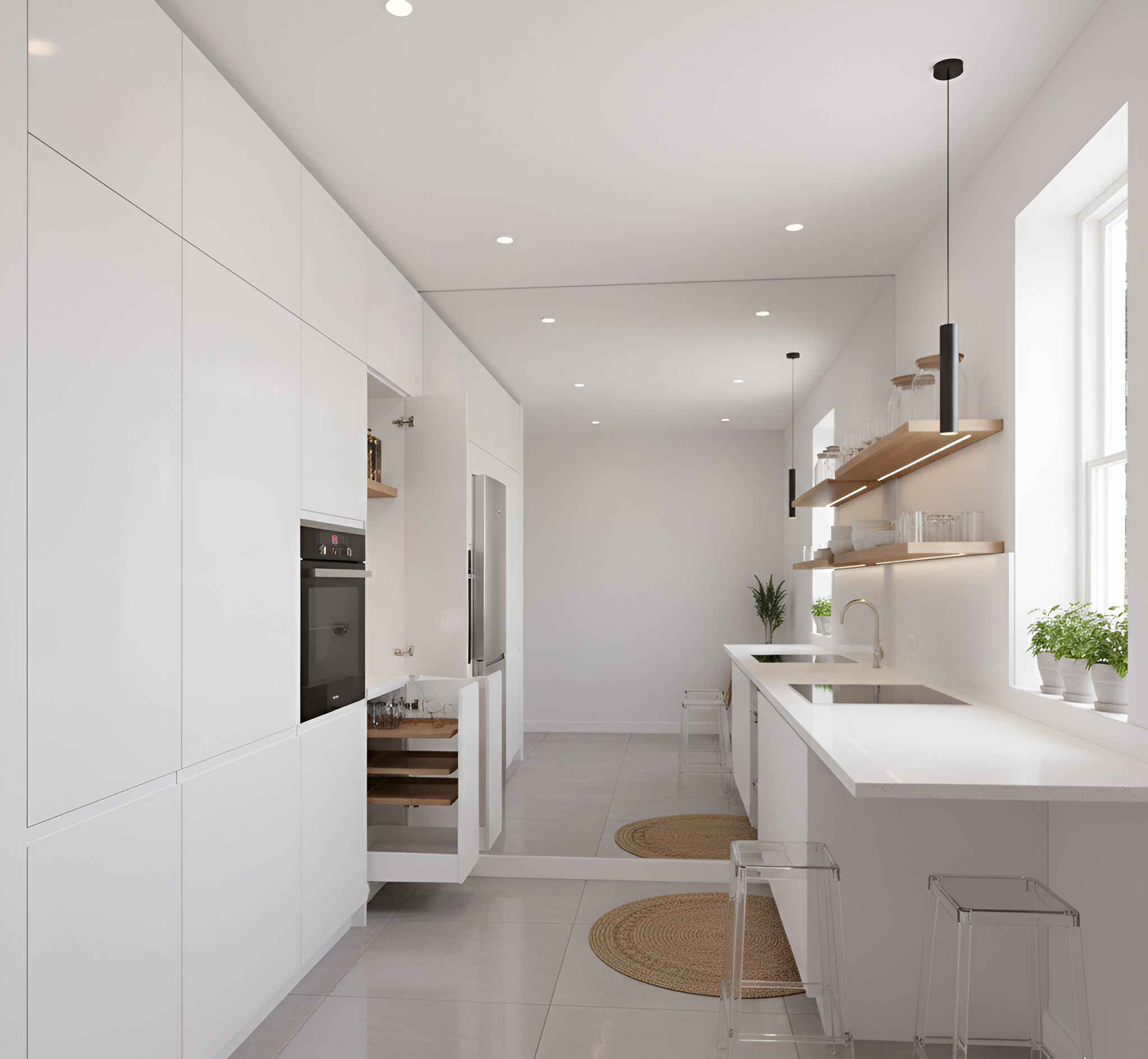
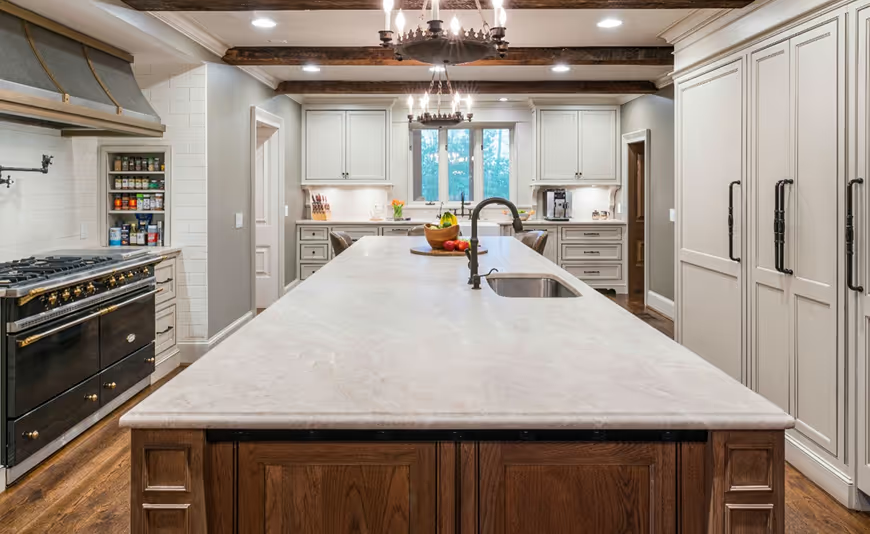
%20%40dnicoledesignstudio.webp)
